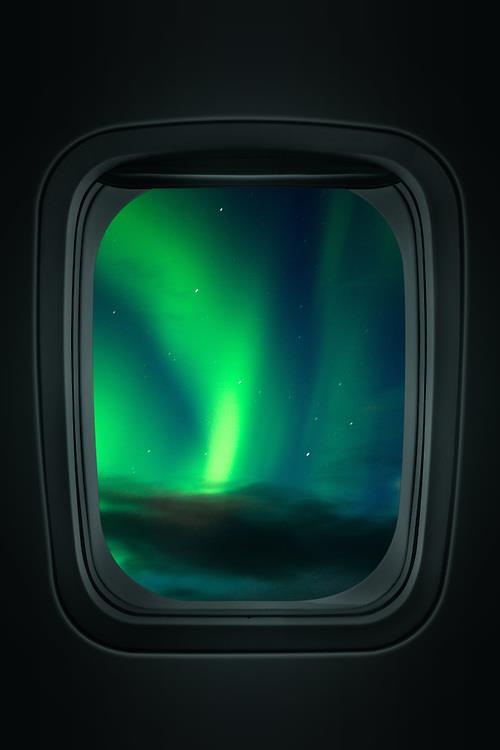Iceland is one of the most sought-after destinations for witnessing the breathtaking Northern Lights. The spectacle of vibrant, dancing colors across the night sky is a bucket-list experience for countless travelers. But with the right timing, you can maximize your chances of seeing this natural phenomenon in all its glory.
In this guide, we’ll explore the best time to see the Northern Lights, Iceland’s best viewing spots, and with tips on what to expect during this magical phenomenon. Whether you’re planning a winter getaway or seeking the perfect aurora adventure, we’ve got you covered!
What are the Northern Lights?
The Northern Lights, or Aurora Borealis, is a stunning natural wonder caused by electrically charged particles from the sun. These particles, often referred to as “solar wind” or “sun dust,” are released during continuous explosions on the sun’s surface. When they collide with Earth’s atmosphere, they light up, creating the spectacular display we see in the sky.
While this process happens year-round, we can only see the Aurora during the darkest months, which is why the best time for the Northern Lights in Iceland isn’t tied to the seasons. A similar spectacle occurs at the South Pole, known as the Southern Lights or Aurora Australis
Why Are There Different Colors in the Northern Lights?
The colors of the Northern Lights are determined by the gasses in the Earth’s atmosphere that interact with the sun’s charged particles.
For example the green color which is the most commonly seen, occurs when the particles collide with oxygen. Oxygen can also cause a rare red light.This process is similar to how neon signs emit different colors depending on the gas in the tube: helium creates orange/white, neon produces red/orange, argon gives lavender, and krypton creates gray/green.
The altitude at which the particles collide also affects the colors of Aurora displays:
- At very high altitudes (around 300 km/185 miles), oxygen causes a rare red aurora.
- The common yellow/green light is produced by oxygen collisions at lower altitudes (100-300 km/60-185 miles).
- At around 100 km / 60 miles, nitrogen produces red light, often forming the lower fringes of the Auroral oval.
- Lighter gasses high in the atmosphere, like hydrogen and helium, create blue and purple hues,but these are rarely seen.
What’s the Best Time to See the Northern Lights in Iceland?
The best time for the Northern Lights in Iceland is during the winter months, from late September to mid-April. This period offers the most optimal conditions for witnessing this natural wonder due to longer nights, clear skies, and higher solar activity.
If you’re planning an Aurora hunting trip to Iceland, the best time to go for the Northern Lights depends on the month. Here’s a breakdown of the ideal times to plan your visit:
September to November
As the nights start to grow longer in September, the conditions for the Northern Lights start to improve, making it one of Iceland’s best times to go for Northern Lights. October and November have dark nights ideal for spotting the aurora, but temperatures aren’t as extreme as the deep wintertime. During this period, activity tends to be higher, and you can experience milder weather. These months are ideal if you want to avoid the coldest temperatures while still getting a good chance of seeing the lights.
December to February
December, January, and February are the best times to see the Northern Lights in Iceland. The nights are longest during this time, with up to 18 hours of darkness each day, providing plenty of time to catch a glimpse of the aurora. Skies during the winter months are often clear, and the crisp air makes the conditions ideal for seeing the lights in their full splendor. The downside, however, is the unpredictable weather and the possibility of storms, so it’s important to be prepared for the harsh conditions.
March and Mid-April
March and mid-April are also some of the best times to see the Northern Lights in Iceland, as the weather starts to warm up and the nights remain long enough for optimal viewing. By mid-April, while the nights are still dark, the chances of seeing the Aurora decrease slightly as daylight hours increase. However, these months offer a good balance between favorable viewing conditions and more moderate weather.
Where to See the Northern Lights
 You can only see the Northern Lights in the northern and southern hemispheres due to the concentration of the Earth’s magnetic fields at the poles, with the further north or south you go increasing your chances of witnessing incredible aurora activity.
You can only see the Northern Lights in the northern and southern hemispheres due to the concentration of the Earth’s magnetic fields at the poles, with the further north or south you go increasing your chances of witnessing incredible aurora activity.
In Iceland, you don’t need special tours to see the Northern Lights; the key is to avoid urban light pollution from streetlights, cars, shops, and other artificial sources. If the Northern Lights forecast app indicates a high probability, hop into your camper van and drive away from any nearby village or artificial light that might hinder your view.
As for finding the perfect spot, it depends on what you’re aiming for in your photos. If you’re happy with capturing the lights alone, any dark location will do, but if you want to add a scenic composition, places with water, desolate farms, or churches make excellent foregrounds for a stunning shot.
Read more: Winter camping in Iceland
Ideal Conditions for Viewing
To experience the Northern Lights in their full glory, certain conditions need to align perfectly. While choosing the best place and time to see the Northern Lights in Iceland is important, your actual viewing experience can vary depending on different factors.
Here’s how to maximize your chances of witnessing the Aurora in Iceland.
Solar Activity
Higher activity means more intense auroras. Solar cycles follow an approximately 11-year pattern, with peaks in solar flares (solar maximums) offering the best chances to see vibrant auroras. To track ongoing cycles, you can rely on aurora forecasts that provide real-time updates on solar conditions, helping you plan the perfect night for viewing.
Clear Skies
Clouds are the biggest obstacles when trying to see the Northern Lights. Although the colder months often bring clearer skies and longer nights, making them the best time to see the Northern Lights, Iceland’s unpredictable weather patterns can roll in quickly, especially in coastal or mountainous areas. To increase your chances of seeing the Aurora, find a location that’s sheltered from clouds and storms, or consider taking a self-drive tour through Iceland.
Darkness
The Aurora is best seen away from artificial lights. As the Aurora is usually faint, even a small amount of light pollution can interfere with your ability to see it clearly. The further you are from urban areas, the better your chances of spotting the Aurora. Iceland’s rural areas offer the perfect backdrop for this, as they’re far from the light pollution of cities. For the best experience, head into the countryside, where natural light is minimal, and the Northern Lights will shine through.
How to See the Northern Lights in Iceland
Seeing the Northern Lights is one of the most unforgettable experiences you can have when visiting Iceland. Whether you’re an adventure seeker or just looking to witness the beauty of the Aurora, there are various ways to catch this mesmerizing display.
From the freedom of a road trip to tours and even boat trips, each method offers a unique perspective of Iceland’s stunning natural light show.
By Campervan
Want the freedom to explore at your own pace? With a camper rental in Iceland, you’ll be able to chase the Aurora wherever it may appear — without being tied to a specific location. With almost 24-hour darkness during the colder months and total freedom with your campervan, you’ll be able to make the most of the best time to see the Northern Lights in Iceland. Simply park in remote areas away from cities and watch the Northern Lights in all their glory. Iceland’s roads are well-maintained, making it easy to explore, and you can access some of the most isolated spots for unrivaled views.
By Foot
For a more intimate experience, viewing the Northern Lights by foot can be an incredible adventure. Iceland’s landscapes offer plenty of spots where you can walk under the stars and enjoy the peaceful solitude while waiting for the Aurora to light up the sky. Whether you’re in a secluded rural area or trekking through one of the country’s national parks, being on foot gives you a closer connection to nature. Just make sure to dress warmly and be prepared for cold conditions.
Guided Tours
If you prefer a more structured experience, guided Northern Lights tours are an excellent option. Many local guides in Iceland specialize in Aurora hunting, taking you to the best spots based on real-time forecasts of solar activity and weather conditions. Guides will not only take you to areas with minimal light pollution, but they also offer key insights into the science behind the Aurora.
By Boat
For a unique perspective of the Northern Lights, consider a boat tour. Viewing the Aurora from the water is a magical experience, as you can watch the colorful lights reflect off the sea. Boat tours often depart from Reykjavik or other coastal towns, taking you away from light pollution and into the open waters where the Northern Lights are most visible. The boat’s gentle sway adds to the serenity of the experience, making it one of the most memorable ways to see the lights.
Photographing the Northern Lights
Now that you know the best time to go to Iceland to see the Northern Lights, it’s important to consider the best ways to experience and photograph this natural wonder.
From choosing the right locations to mastering your camera settings, here are some essential tips and methods to capture the Aurora.
- Use a Good Camera: To capture the Northern Lights, you need a camera capable of long exposures in low light conditions.
- Tripod: A tripod is essential to keep your camera steady during long exposure shots, preventing blurriness.
- Bright Lens: A fast, wide-aperture lens (e.g., f/2.8 or lower) will allow more light into the camera, helping to capture the Aurora clearly.
- Remote Trigger or Self-Timer: To avoid camera shake, use a remote trigger or set the self-timer for shots.
- Anticipate Movement: The Northern Lights are constantly moving, sometimes quickly, which can blur your shots if exposure is too long — similar to photographing flowing water.
- ISO Settings: Use a high ISO setting to capture the Aurora’s brightness, but be mindful that too high an ISO can introduce grain into the picture.
- Trial and Error: Experiment with different ISO levels and exposure times to find the best balance for sharp, clear images without too much noise.
What to Bring When Hunting for the Northern Lights
Before heading out to see the Northern Lights, proper preparation is key to ensuring you stay comfortable and capture the best experience.
Here’s a list of essential gear to bring along:
- Warm Clothing: Layered clothing, thermal wear, and a waterproof outer layer to protect against Iceland’s cold temperatures.
- Sturdy Footwear: Insulated, waterproof boots to keep your feet dry and warm, especially if you’re walking on snow or icy surfaces.
- Camera Gear: A DSLR or mirrorless camera, tripod, remote trigger/self-timer, and extra batteries (cold temperatures can drain them quickly).
- Headlamp/Flashlight: A headlamp with red light to avoid ruining your night vision while setting up your gear.
- Gloves and Hat: Insulated gloves that allow for dexterity and a warm hat are must-haves to keep you comfortable during long waiting times.
- Snacks and Water: High-energy snacks and water to keep you fueled through the cold nights.
- A Blanket: For extra warmth during prolonged exposure to the cold, especially if you plan to sit outside for extended periods.
All the Northern lights photos above and in the video are taken by contestants
in our CamperStories competition. Thank you all for your contributions!
Chase the Northern Lights with Rent.is
The best time to go to Iceland for the Northern Lights is during the winter months when the skies are dark and the Aurora is at its most vibrant. Renting a campervan gives you the freedom to explore Iceland’s remote landscapes and chase the Northern Lights wherever they may appear, away from city lights and crowds.
With a campervan from Rent.is, you can enjoy the flexibility of a mobile base camp, complete with warmth, comfort, and the convenience of a fully equipped vehicle to make your Aurora hunt seamless. Book your campervan today and embark on the ultimate Northern Lights adventure!
Happy hunting! #WohoCamper
Iceland Travel Guides
If you like what you see, please subscribe to our YouTube channel!








